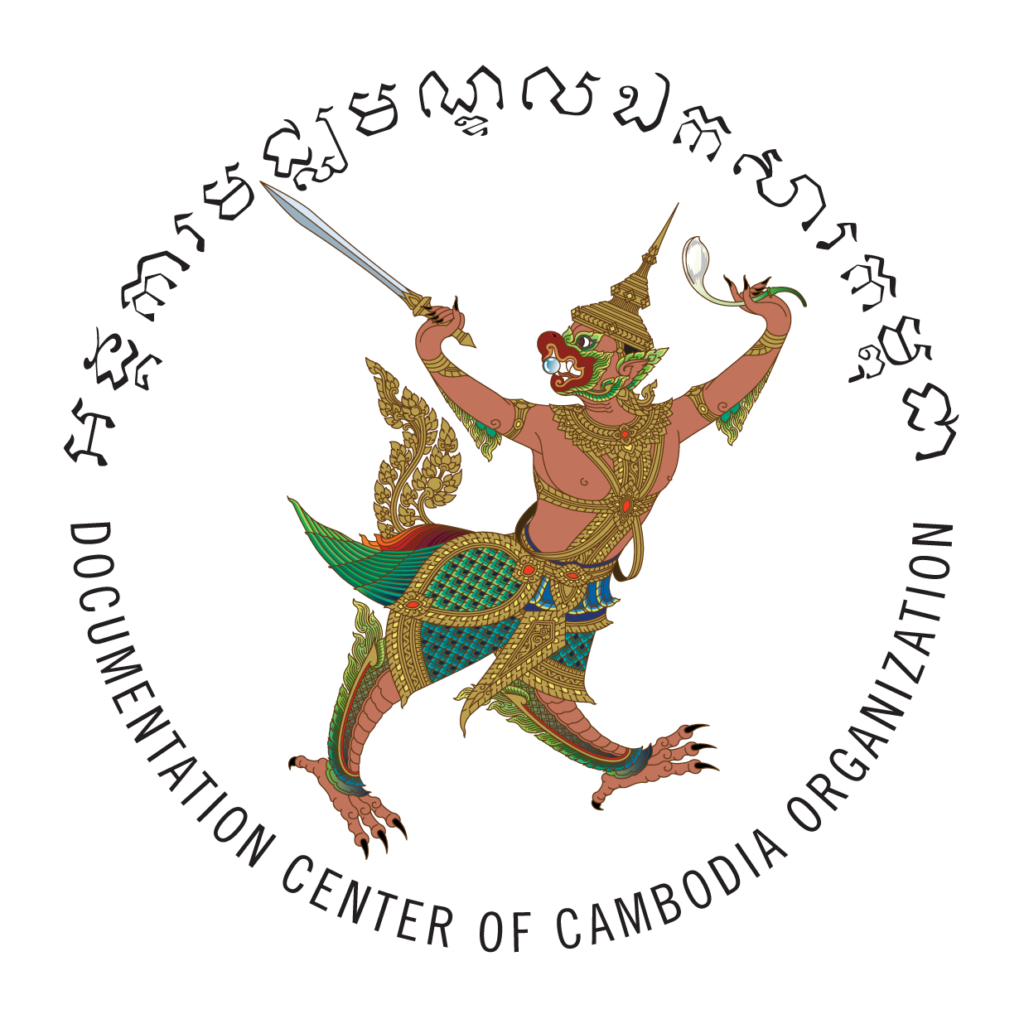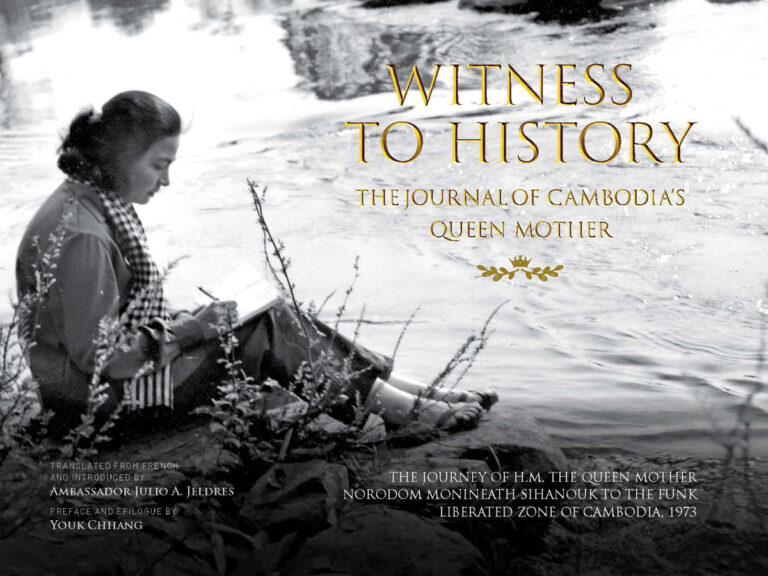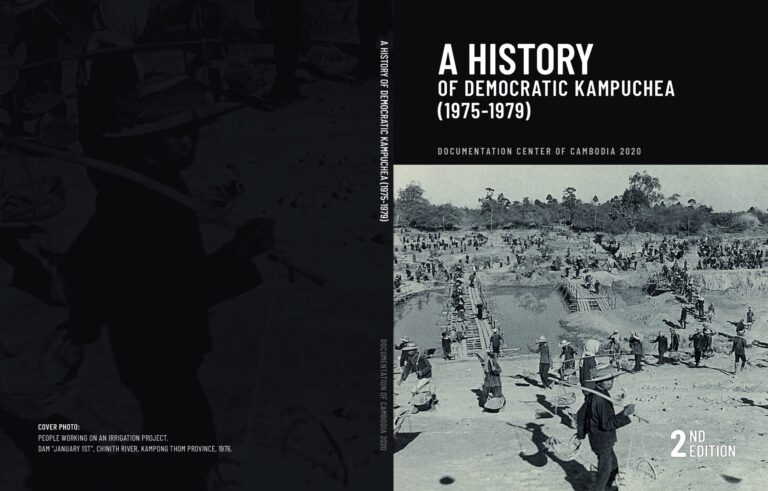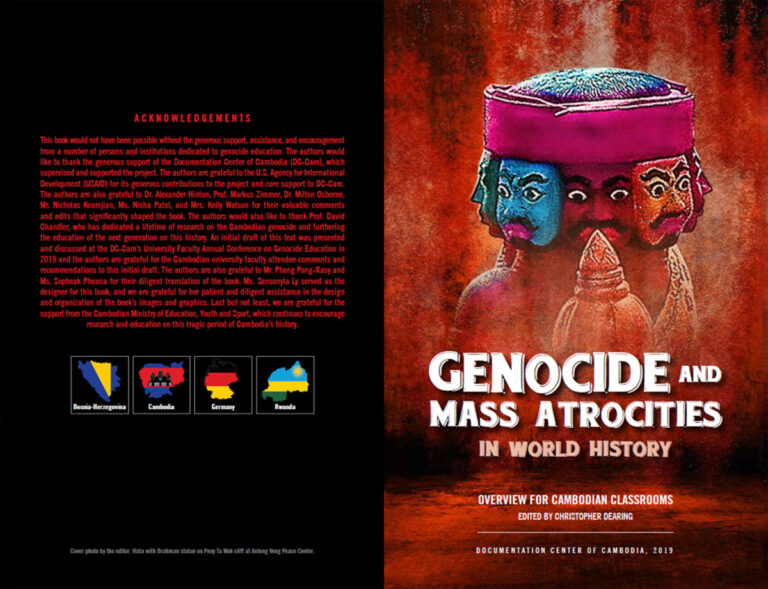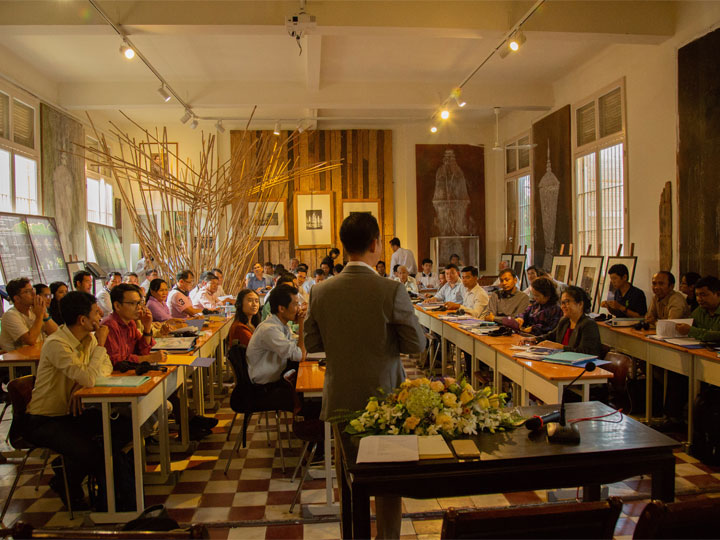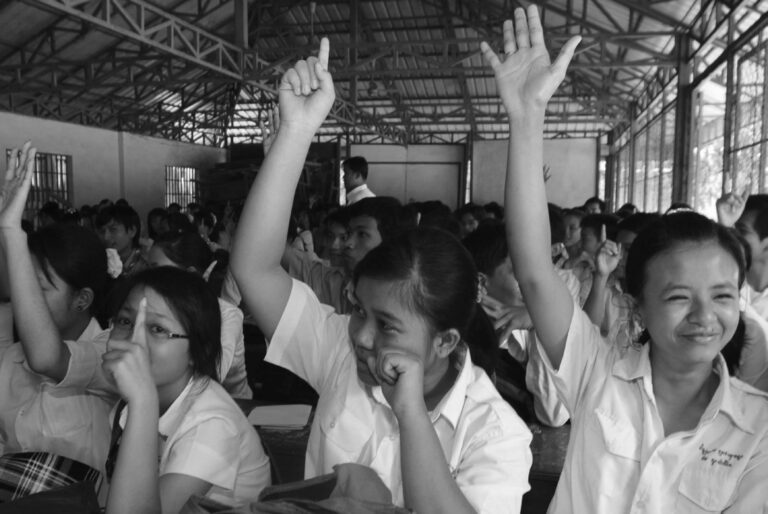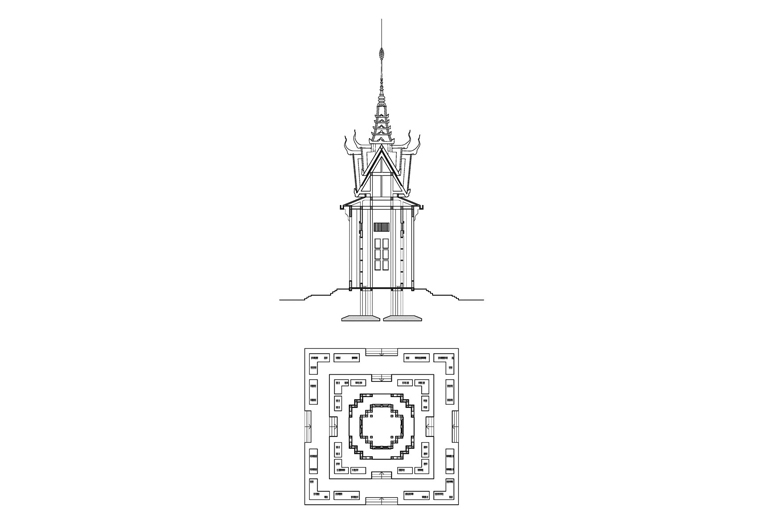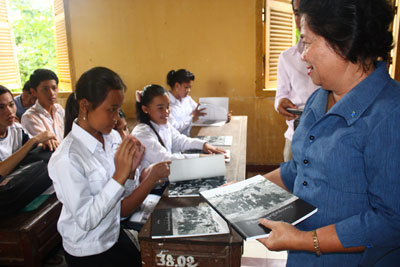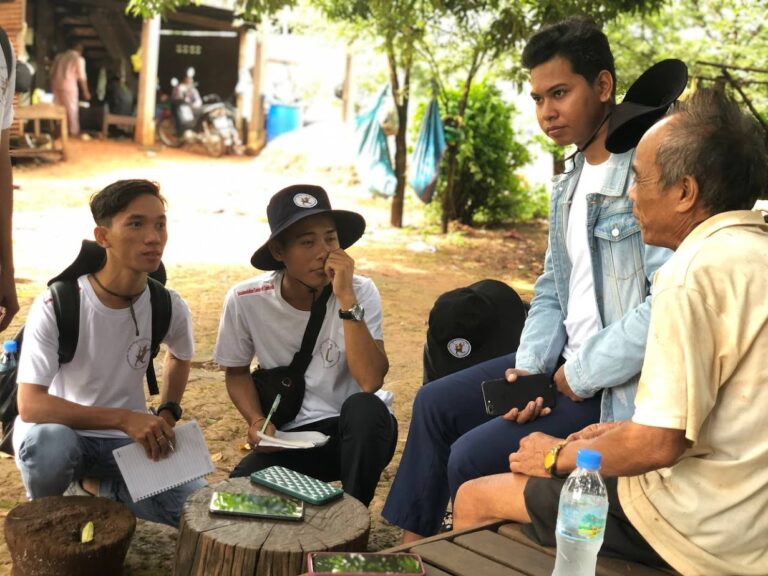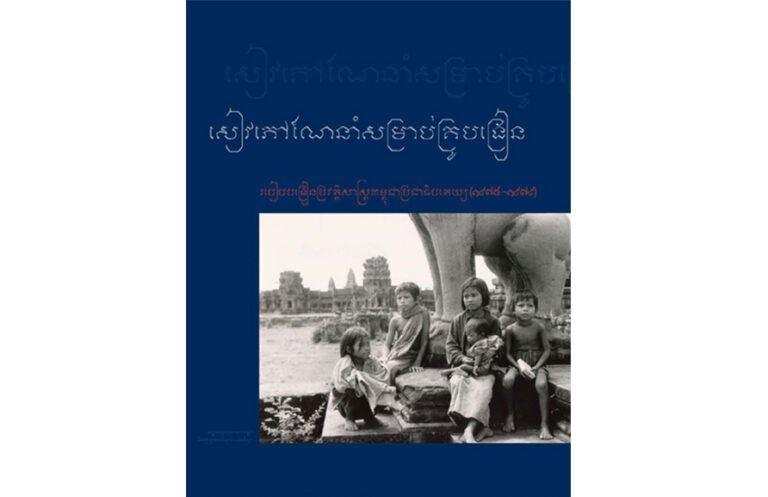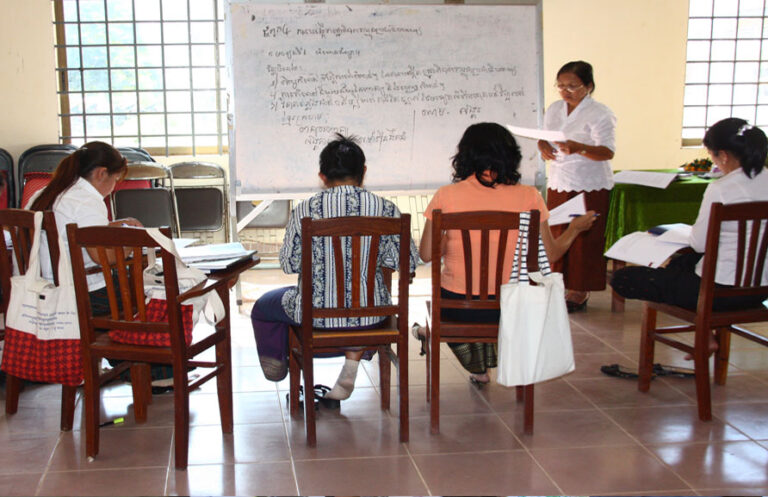MEMORY:
Education
Archives and survivors jointly contribute to crafting the factual and emotional context for institutional memory. Creation of the Extraordinary Chambers in the Courts of Cambodia with international support introduced a legal process for reviewing that context through the rule of law filter. Within that context, future generations of Cambodians will confront and analyze the legacy of the Khmer Rouge era and reconcile its abrupt and evil brutality with that of a tranquil and deferential people largely committed to the principles of Buddhism. Although painful, such reconciliation of memories will continue to engender collective healing. Confronting this legacy will be tempered by the recognition that genocide and mass atrocity crimes follow a trajectory of progressive criminality that is identifiable and vulnerable to early intervention. The educational functions of the Sleuk Rith Institute will facilitate such analyses of memory, generate intervention options, and propose how they might be deployed. The Institute’s educational programs also will expand the Documentation Center of Cambodia’s groundbreaking national genocide education programs for students in the country’s schools. Such programs build genocide awareness in the minds of youth born after the genocide to ensure that they understand and do not forget.
Genocide Research and Education
Cambodian schoolchildren are taught that 3.3 million people were killed under the 1975-1979 Democratic Kampuchea regime (most scholars place the number at around 1.7 million). But the Royal Government of Cambodia, which prepares school texts, has done surprisingly little to educate people born after the regime about the genocide. For example, the entire 9th grade text on the regime for the year 2000 reads: From April 25 to April 27, 1975, the Khmer Rouge leaders held an extraordinary Congress in order to form a new Constitution, and renamed the country “Democratic Kampuchea.” A new government of the DK, led by Pol Pot, came into existence after which Cambodian people were massacred. By 2002, coverage of the regime had disappeared from junior and senior high school texts (the section on modern history was torn out as a result of an intra-government dispute over the treatment of the 1993 elections). No new texts were published in 2003 or 2004.
With the passage of time, both the leaders of the Khmer Rouge and its victims are growing older. Without a concerted effort, students of this and future generations may know little – if anything – about the history of Democratic Kampuchea. Cambodia’s many pressing developmental needs have meant that the Ministry of Education’s resources are stretched thin (few teachers are properly trained on teaching such sensitive but critical subjects as genocide). Thus, the Ministry has sought DC-Cam’s assistance in providing supplementary text on the Khmer Rouge and other educational materials related to genocide. This project will seek to enhance the capabilities of teachers and the Ministry of Education to convey the regime’s history through the provision of ideas, materials, recommendations on curricula, a short text on Democratic Kampuchea, and a collection of survivors’ stories.
